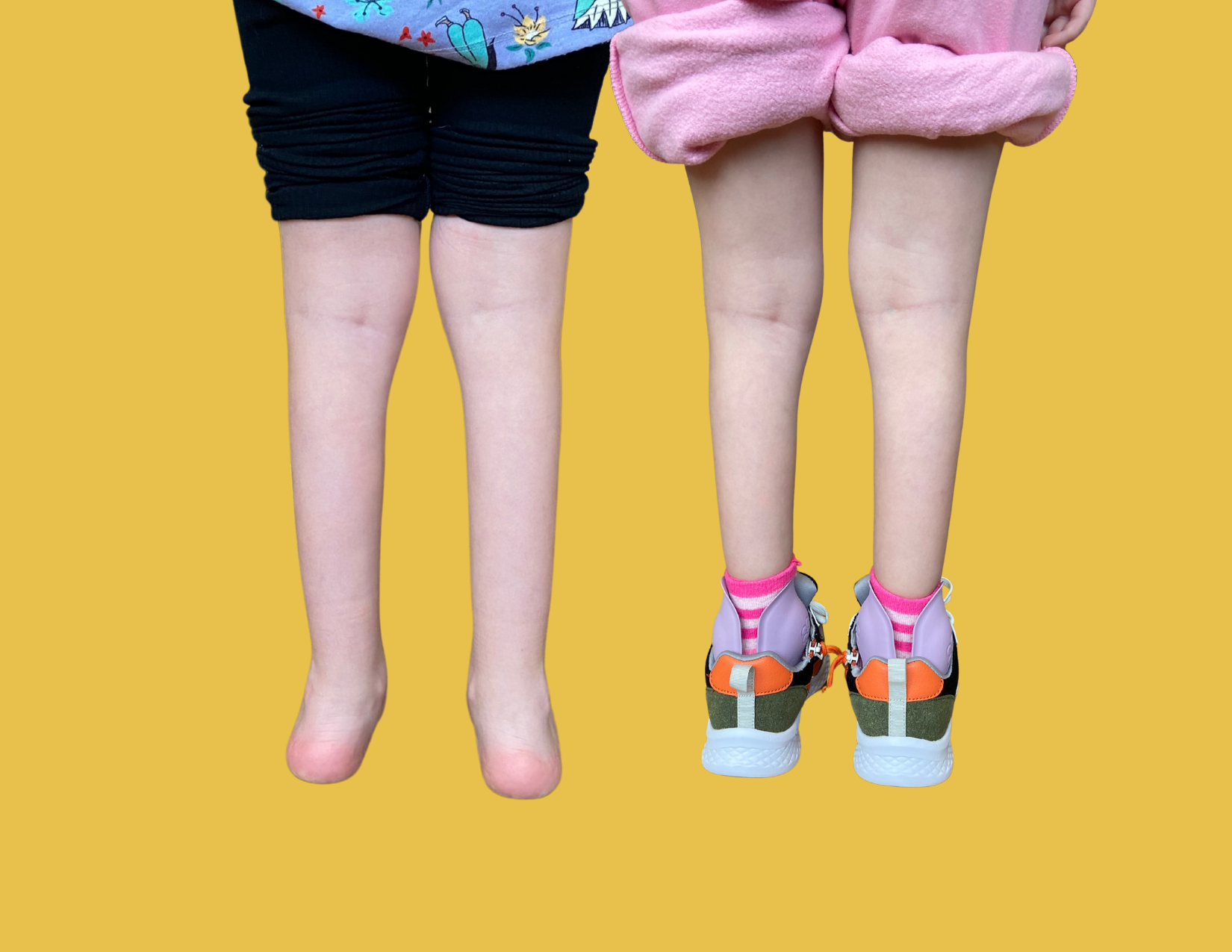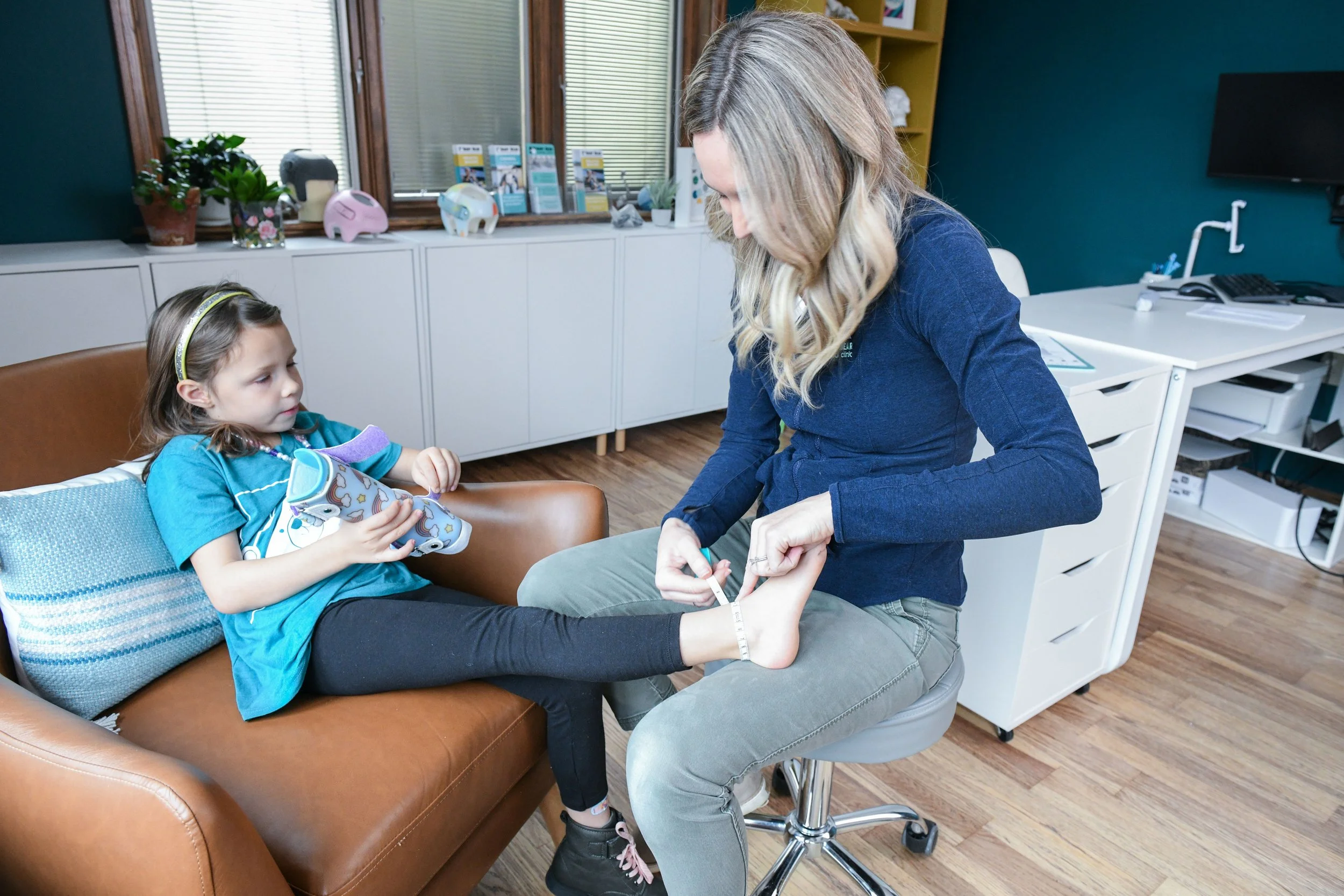Cool, But HOW? This is exactly how lower extremity orthotics help improve balance, mobility, and confidence in kids
Proper movement and mobility are crucial for a child’s physical development and overall well-being. For children with gait abnormalities, muscle weakness, or neurological conditions, lower extremity orthotics—such as AFOs (Ankle-Foot Orthoses) and SMOs (Supramalleolar Orthoses)—play a vital role in improving balance, mobility, and strength. These devices are more than just braces; they are precision-engineered tools designed to enhance biomechanical function and optimize movement patterns.
Not sure if your child would benefit from orthotics? Read this.
Or take our quick one-minute quiz for further guidance:
The Importance of Proper Alignment in Movement
Alignment is the foundation of efficient movement. When the bones, joints, and muscles are properly aligned, the body can move in a way that minimizes strain and maximizes efficiency. Poor alignment, on the other hand, can lead to muscle fatigue, joint pain, and long-term musculoskeletal issues. In children, improper foot or ankle positioning can hinder motor development and make it more difficult to achieve mobility milestones such as standing, walking, and running.
Lower extremity orthotics are designed to correct alignment issues by providing external support to the feet and lower legs. By holding the foot and ankle in a more optimal position, these orthotic devices help to:
The power of great-fitting SMOs!
Prevent excessive inward or outward rolling of the foot (pronation or supination)
Promote a more stable base of support for balance
Reduce the risk of muscle strain or joint misalignment
Improve posture and weight distribution
How Orthotics Improve Balance and Stability
Balance is essential for all movements, from standing still to running and jumping. For children with weak muscles, poor coordination, or conditions such as cerebral palsy or hypotonia, maintaining balance can be a challenge. Lower extremity orthotics improve stability by:
- Providing a rigid or semi-rigid structure that limits excessive movement of the ankle joint
- Encouraging even weight distribution across the foot, reducing the likelihood of falls
- Offering proprioceptive feedback, helping the child’s body recognize correct positioning
When a child has proper balance, they are more confident in movement and can participate more fully in activities like walking, climbing, and playing with peers.
Related: How to Make Orthotics Fun: Tips for Kids to Love Their AFOs & SMOs
The Role of Orthotics in Enhancing Mobility
Mobility is the ability to move freely and efficiently. When a child struggles with foot or ankle weakness, they may develop compensatory movements, such as toe-walking or excessive knee bending, which can lead to long-term musculoskeletal complications. Orthotics support mobility by:
Encouraging proper gait mechanics, such as heel-to-toe walking
Preventing excessive motion that could cause instability or discomfort
Reducing the energy expenditure required for movement, allowing children to walk longer distances with less fatigue
By addressing these challenges early, orthotics can help children move with greater ease and independence.
Related: From First Steps to Big Strides: How Orthotics Help Kids Reach Their Milestones
How Orthotics Contribute to Strength Development
Strength development is closely linked to movement. When a child can move correctly and efficiently, their muscles are better engaged and strengthened over time. Orthotics contribute to strength by:
Supporting muscles in the correct alignment, allowing them to activate properly
Preventing compensatory movements that can lead to muscle imbalances
Encouraging consistent weight-bearing, which promotes lower limb muscle development
While orthotics provide necessary support, they also allow the child’s muscles to work within a controlled range, strengthening them gradually as mobility improves.
The Importance of Proper Measurements and Adjustments
For lower extremity orthotics to be effective, they must be precisely fitted to the child’s unique anatomy and needs. Customization is key, as an ill-fitting orthotic can create new issues rather than resolving existing ones. Here’s why accurate measurements and regular adjustments are essential:
Customized Fit: Each child’s foot and ankle structure is different, requiring a tailored orthotic to provide the best support.
Growth Adaptations: Children grow quickly, and their orthotics must be adjusted or replaced periodically to ensure continued effectiveness.
Comfort & Functionality: An improperly fitted orthotic can cause pressure points, discomfort, or restricted movement. Regular follow-ups help ensure optimal function and comfort.
Monitoring Progress: As a child’s strength and mobility improve, adjustments may be needed to provide the appropriate level of support and encourage further development.
Related: When Is It Time to Replace My Child’s AFOs or SMOs?
Final Thoughts: Supporting Your Child’s Mobility Journey
Lower extremity orthotics are an essential tool for children who need additional support with balance, mobility, and strength. By improving alignment, enhancing stability, and promoting proper movement patterns, these devices help children achieve their full potential in physical development. When properly measured and adjusted, orthotics can make a world of difference in a child’s confidence, independence, and overall quality of life.
If you’re wondering whether orthotics might benefit your child, our team at Baby Bear Clinic is here to help. Schedule a free consultation today to learn more about how custom orthotics can support your child’s movement and growth!




